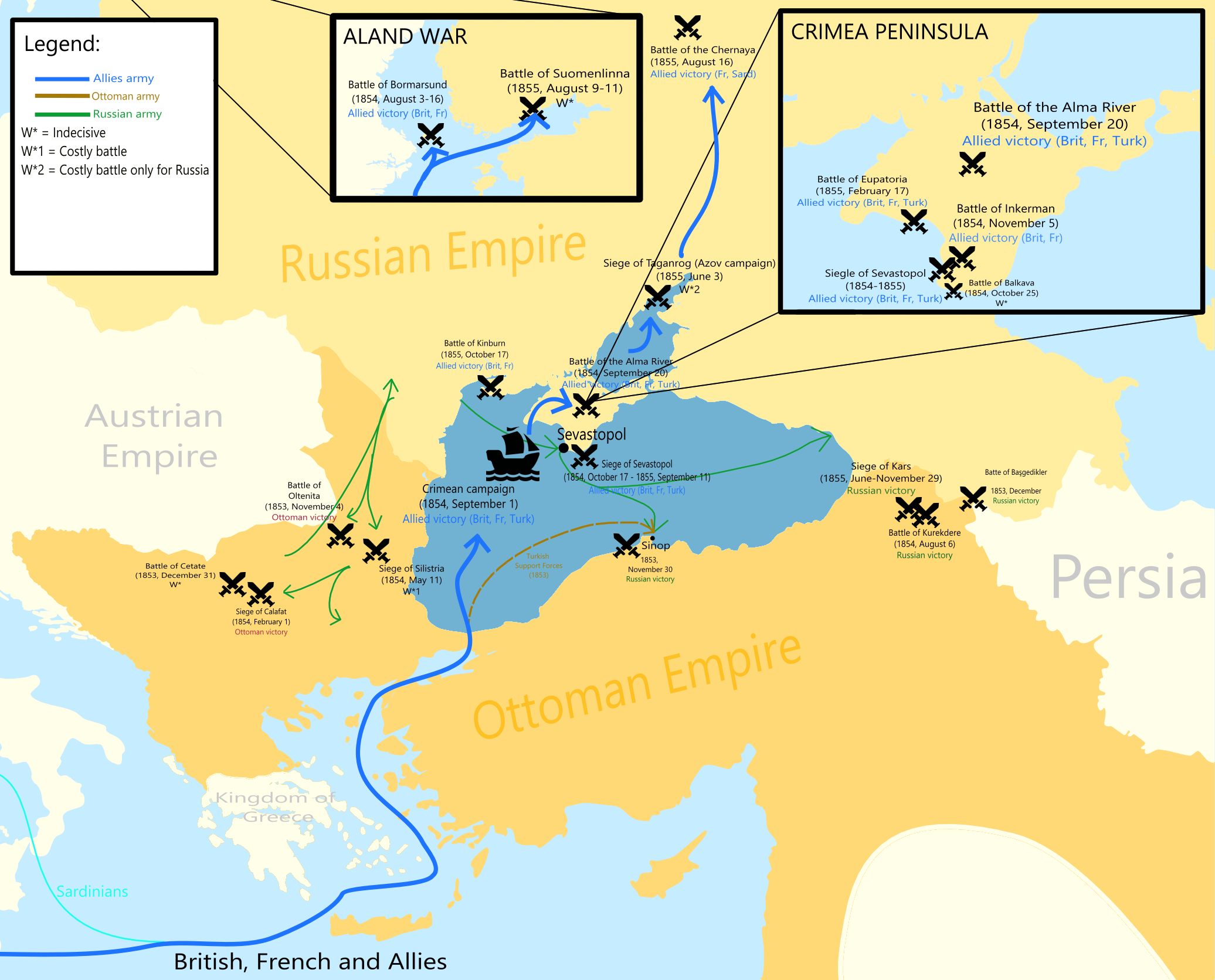
Since the beginning of the full-scale Russian invasion of Ukraine, the strategically vital Crimean Peninsula has emerged as a critical front in the ongoing conflict. Occupied by Russia since 2014, Crimea has served as a primary base for Russian military operations, particularly for its offensive on Southern Ukraine. Its significance is underscored by Russian statements, with Vladimir Putin calling it a ‘sacred place’ and a ‘holy land,’ and Deputy Chairman of the Security Council of Russia Dmitry Medvedev warning of severe consequences for any attack on the peninsula.
Despite these declarations and the inherent risks, Ukrainian forces have progressively intensified their operations deep within Russian-occupied Crimea. These actions represent a calculated shift in military strategy, targeting key Russian military assets, logistical hubs, and command centers that were previously considered beyond reach. The aim has been to disrupt Russian capabilities, degrade their military infrastructure, and demonstrate Ukraine’s ability to project force into areas deemed secure by Moscow.
The following section details some of the most significant Ukrainian elite operations and strategic strikes that have profoundly impacted Russian military and logistical capabilities within Crimea. These operations, ranging from covert special forces landings to precision missile strikes, highlight Ukraine’s evolving capabilities and its determined efforts to challenge Russia’s control over the peninsula, leading to the demonstrable annihilation of various Russian military assets and strategic infrastructure.

1. **Ukrainian Special Operations Landings in Crimea**
Ukrainian special forces have conducted daring amphibious and airborne operations directly onto the Crimean Peninsula, marking significant acts of defiance and intelligence gathering behind enemy lines. On August 24, 2023, coinciding with Ukraine’s Independence Day, the HUR (Defence Intelligence of Ukraine) announced a special operation near the towns of Mayak and Olenivka on the Tarkhankut Peninsula. This operation involved a seaborne landing and airborne deployment of Ukrainian personnel. The HUR confirmed that all objectives of the operation were successfully completed, resulting in casualties for Russian forces, and culminating in the symbolic raising of the Ukrainian state flag over the Crimean peninsula once again.
In a separate infiltration, early in October, Ukrainian special forces from the Bratstvo battalion, in cooperation with other Ukrainian units and defense intelligence, conducted a night assault into Crimea. The operation, documented by a drone using an infrared camera, saw a swarm of Ukrainian jet skis racing across the ocean under pitch black skies before slowing down to avoid detection as they approached the shore. One soldier, identified by the call-sign “Muzykant,” a violinist turned soldier, described the operation as a blur due to high adrenaline, only fully realizing the colossal task completed upon returning to base.
This dangerous operation, involving at least 10 Bratstvo battalion soldiers, took months of meticulous planning and preparation to mitigate the numerous risks involved. The forces initially sailed on larger speedboats before transitioning to lower-profile jet skis once within range of the peninsula. Despite stormy seas with waves up to two meters high and the presence of patrolling Russian warships, specifically Raptors, each armed with heavy machine guns and a 30-millimeter gun and carrying a crew of 20 Russian soldiers, the Bratstvo battalion successfully navigated these challenges. Upon reaching the peninsula, they reportedly destroyed Russian military equipment positioned by the sea before heading back, completing their mission within hours. The objectives extended beyond mere sabotage of military equipment, aiming also to send a clear message to Ukrainian citizens in the occupied territory, reinforcing their spirit and faith in Crimea’s eventual return to Ukraine.
Military equipment: Little green men (Russo-Ukrainian War)
Categories: Annexation of Crimea by the Russian Federation, Articles containing Russian-language text, Articles containing Ukrainian-language text, Articles with short description, CS1 Finnish-language sources (fi)
Get more information about: Little green men (Russo-Ukrainian War)
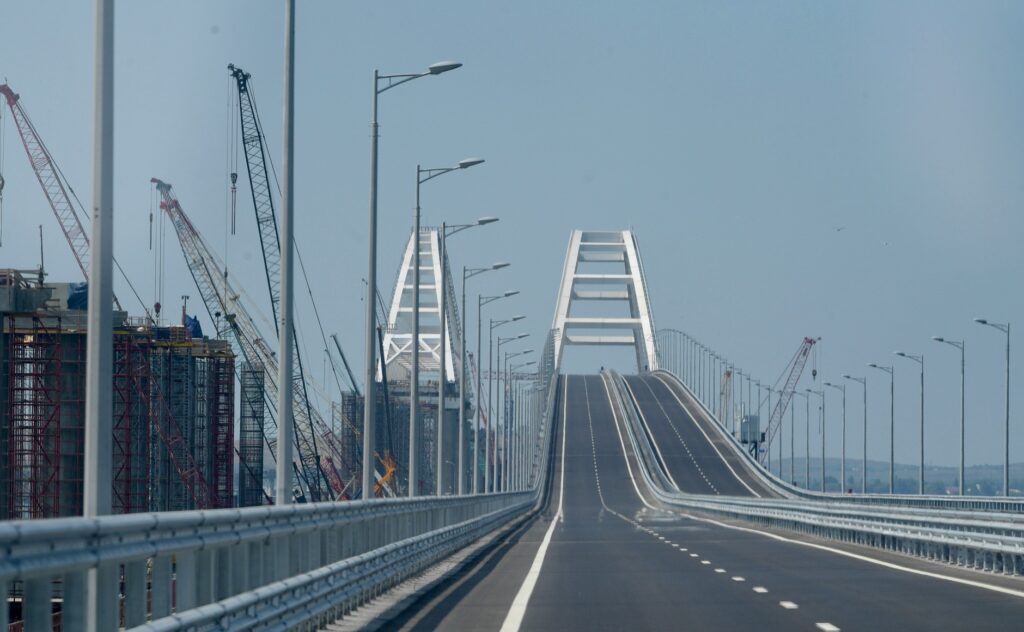
2. **Attacks on the Crimean Bridge**
The Kerch Strait Bridge, a critical logistical artery connecting Crimea with mainland Russia, has been a repeated target for Ukrainian forces, highlighting its strategic importance for Russian military supply lines. The first major incident occurred on October 8, 2022, around 6:00 am, when an explosion rocked the bridge. This powerful blast caused two lanes of the roadway to collapse and ignited tanks on a train on the parallel rail bridge. Following the incident, a single lane for motor vehicles was promptly reopened with alternating directions, and a ferry service was instituted for heavy goods vehicles, while rail traffic also recommenced. Russian President Vladimir Putin subsequently claimed this attack as the justification for the missile strikes launched against Ukraine in October 2022.
The bridge faced another significant assault on July 17, 2023, when it was targeted by two exploding drone boats. This attack resulted in the collapse of at least one of the road sections, and two individuals were reported to have been killed. Ukraine later publicly acknowledged its responsibility for carrying out this particular attack. The consistent targeting of the bridge underscores its vulnerability and its crucial role in sustaining Russian military bases in Crimea and supporting Russian forces operating in southern Ukraine.
Further demonstrating Ukraine’s persistent efforts to disrupt Russian logistics, the Crimean Bridge was temporarily closed yet again on June 3, 2025, after several underwater C-4 explosives detonated under the structure. Russian authorities later reopened the bridge after the incident. The Security Service of Ukraine (SBU) claimed responsibility for this sophisticated attack, stating that its agents had planted 1,100 kg (1.1 t) of TNT equivalent at a support section of the bridge. These recurring strikes on the Kerch Bridge collectively aim to sever or severely impede the primary supply route for Russian military operations and occupation efforts in southern Ukraine, thereby contributing to the annihilation of Russia’s logistical capabilities.
Military equipment: 2025 Crimean Bridge explosion
Title: 2025 Crimean Bridge explosion
Partof: Crimea attacks (2022–present)
Perpetrator: Security Service of Ukraine
Caption: Video of the explosion released by the SBU
Date: Tue Jun 03 2025 00:00:00 GMT-0700 (Pacific Daylight Time)
Time: 4:44 a.m.
Timezone: UTC+03:00
Location: Crimean Bridge
Categories: 2025 disasters in Russia, 2025 disasters in Ukraine, Articles with short description, Attacks in Russia in 2025, Attacks in Ukraine in the 2020s
Get more information about: 2025 Crimean Bridge explosion
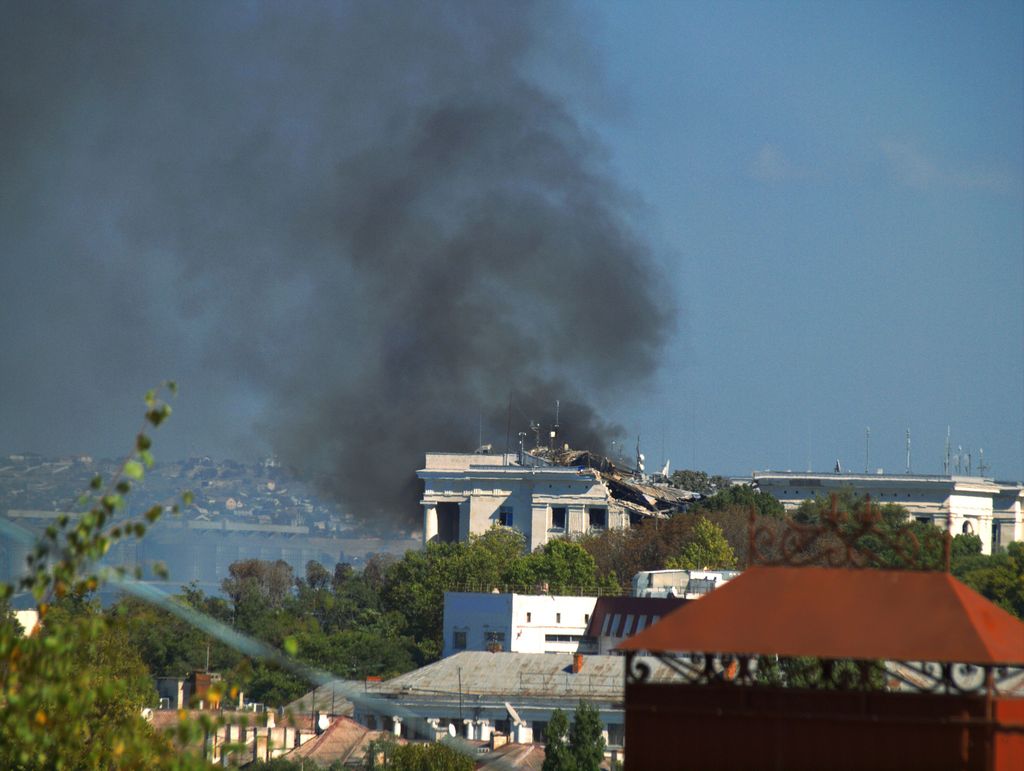
3. **Strikes on Sevastopol Naval Base**
The Sevastopol Naval Base, home to Russia’s Black Sea Fleet, has been a focal point of Ukrainian operations, experiencing numerous drone and missile attacks aimed at degrading Russia’s naval power in the Black Sea. The initial recorded incident occurred on the morning of July 31, 2022, when a drone carrying an explosive device attacked the headquarters of the Black Sea Fleet. Six people were injured in this assault, leading to the cancellation of all festivities planned for Navy Day in the city. Ukrainian officials, while denying direct involvement, highlighted what they perceived as vulnerabilities in Russia’s air defense system in Crimea following the attack. This was followed by multiple reported explosions and alleged drone shoot-downs in Sevastopol throughout August and September 2022, indicating persistent attempts to penetrate the city’s defenses.
A particularly significant event unfolded on October 29, 2022, when the Russian-occupied Sevastopol Naval Base was subjected to a coordinated attack involving unmanned surface vehicles (USVs) and aerial drones. Russian officials reported that nine unmanned aerial vehicles (UAVs) and seven USVs participated in this assault, which occurred at approximately 4:20 am, accompanied by a strong initial explosion and subsequent ‘claps.’ GeoConfirmed analysts concluded that between six and eight drones were involved, and they believed these drones successfully struck at least three Russian ships, although two naval drones were likely destroyed. Among the vessels reportedly damaged was the Admiral Makarov, which had become Russia’s Black Sea Fleet’s new flagship after the sinking of the Moskva. In response, Russian authorities ceased broadcasting from the city’s surveillance cameras, citing concerns that they provided the enemy with opportunities to detect defense systems, and prohibited entry of boats into Sevastopol Bay. Russia accused Ukraine and the United Kingdom of preparing these attacks, a claim the UK Ministry of Defence dismissed as ‘peddling lies on an epic scale.’ Subsequently, Russia temporarily suspended its participation in the Black Sea Grain Initiative for four days, although grain ships continued to sail from Ukraine despite the announcement.
Ukrainian forces continued their sustained pressure on the naval base with increasingly sophisticated strikes. On September 13, 2023, a Ukrainian strike on the Sevastopol Naval Base reportedly damaged two Russian warships, specifically the Minsk, a large Ropucha-class landing ship, and the Rostov-on-Don, a $300 million Kilo-class submarine. Multiple sources indicated that this strike was carried out using Storm Shadow cruise missiles, known for their deep penetration capabilities and two-phase damage infliction. Experts analyzing photographs concluded that the Minsk was damaged beyond repair. Just nine days later, on September 22, Ukraine launched a missile strike, codenamed ‘Operation Crab Trap,’ on the headquarters of the Russian Black Sea Fleet at Sevastopol Naval Base. The building was reportedly struck by Storm Shadow cruise missiles. Ukrainian intelligence agencies claimed the strike resulted in 34 officer fatalities and at least 100 other Russian servicemen wounded. Three days later, Russian authorities announced their intention to demolish the damaged headquarters. Further attacks included a Ukrainian drone strike on a Russian Tarantul-class corvette in Sevastopol harbor on December 29, 2023, with satellite images confirming its sinking by January 20, 2024. A ‘massive’ missile attack on March 23, 2024, struck a Black Sea Fleet communications center with three Storm Shadow missiles, and Ukraine’s military stated that the strikes damaged three Russian landing ships – the Yamal, the Azov, and the Konstantin Olshansky – along with the spy ship Ivan Khurs. These repeated and impactful strikes illustrate a concerted effort to annihilate the operational capacity of the Black Sea Fleet within its primary base.
Military equipment: Sevastopol Naval Base
Name: Sevastopol Naval Base
NativeName: Noitalic
Location: Sevastopol, Crimea
Caption: Satellite imagery of the Sevastopol naval base
PushpinMap: Crimea
Coordinates: Coord
Type: Naval base
Ownership: United Nations General Assembly Resolution 68/262
Operator: flagicon image, Black Sea Fleet
Controlledby: RUS
Condition: Operational
Built: 1772–1783
Builder: Russian Empire
Used: 1783–present
Garrison: flagicon image, Black Sea Fleet
Occupants: navy
Categories: Articles containing Russian-language text, Articles containing Ukrainian-language text, Articles with short description, Buildings and structures in Sevastopol, CS1 German-language sources (de)
Get more information about: Sevastopol Naval Base
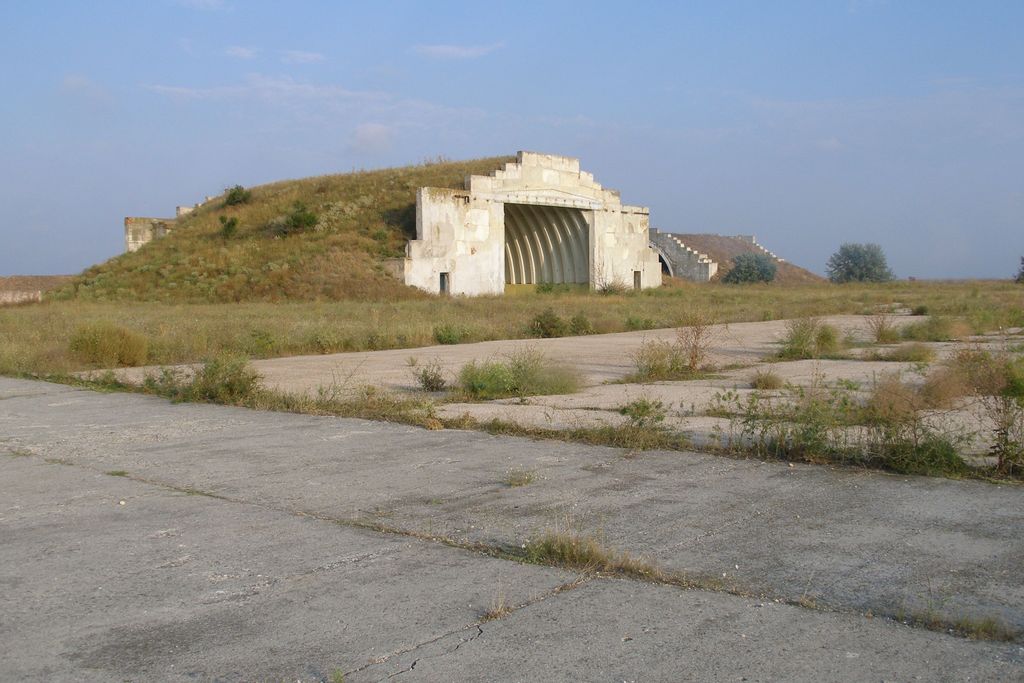
4. **Impact on Crimean Airbases**
Crimean airbases, vital for Russian air operations in southern Ukraine, have been significant targets for Ukrainian forces, with strikes resulting in substantial damage to aircraft and critical infrastructure. A series of large explosions occurred on August 9, 2022, at the Saky airbase in Novofedorivka, Crimea. These blasts reportedly led to one fatality and 13 injuries. Satellite imagery subsequently revealed that seven aircraft were destroyed and three were damaged at the base. This military installation had been under Russian control since the 2014 annexation. Initially, Ukraine denied responsibility, with presidential aide Mykhailo Podolyak stating, ‘Of course not. What do we have to do with this?’ However, the commander of Ukrainian forces, Valeriy Zaluzhnyi, later claimed it was a Ukrainian rocket attack. Russia, conversely, attributed the explosions to the detonation of stored ammunition, suggesting a violation of fire safety requirements as the primary cause and stating there were no signs of a deliberate impact.
Dzhankoi airbase, described as a crucial logistics hub for the Russian army and a critical rail and road hub in their supply network for the attack on Ukraine, has also been subjected to significant Ukrainian strikes. NASA’s FIRMS imagery from April 17, 2024, at 00:41:00 UTC, showed six fires at the air base following Ukrainian missile strikes. Locals reported at least six explosions and multiple secondary explosions. Subsequent satellite pictures provided evidence of the destruction of three to five S-300/S-400 components, with other areas displaying ‘scorch marks’ indicative of damaged but removed equipment. Ukraine later released footage corroborating the launch of multiple missiles directed at the air base. These strikes aim to annihilate logistical connections and air defense capabilities in northern Crimea.
Belbek airbase, another key Russian military facility, has also faced multiple Ukrainian assaults. On January 31, 2024, the Ukrainian Air Force announced it had launched a missile strike on Belbek, which resulted in damage to three Russian military aircraft. In the early hours of May 15, 2024, Ukraine initiated another missile strike against Belbek airbase. This operation reportedly destroyed two MiG-31 fighter jets on the ground, ignited a fire at a fuel and lubricant depot serving the airbase, and wounded 11 soldiers. A subsequent strike in the vicinity also destroyed the launcher component of an S-400 air defense system near the village of Vyshneve, approximately 70km from Belbek, causing the deaths of two Russian soldiers. The Russian-appointed Governor of Sevastopol, Mikhail Razvozhayev, stated that American-made ATACMS missiles were used in this strike, although he claimed all missiles were successfully intercepted by Russian air defenses. These sustained attacks underscore Ukraine’s objective to neutralize Russian air power and defense systems within Crimea, resulting in the annihilation of valuable aerial assets and protective infrastructure.
The ongoing campaign to challenge Russia’s control over Crimea extends beyond these initial, high-profile strikes, evolving into a systematic effort to dismantle the occupiers’ entire military infrastructure. Ukraine’s strategy now focuses on a broader neutralization of Russian capabilities, methodically targeting logistical networks, air defense systems, and critical energy infrastructure, alongside continued pressure on naval assets across the peninsula. These sustained operations highlight Ukraine’s growing intelligence and precision strike capabilities, aimed at making Crimea untenable as a primary Russian military hub.
Military equipment: Operation Spiderweb
Partof: attacks in Russia during the Russian invasion of Ukraine
Caption: Tupolev Tu-95
Target: Russian Air Force
Date: Start date
ExecutedBy: Security Service of Ukraine
Outcome: 10–11 Tu-95MS and Tu-22M3 destroyed (per The War Zone)
Categories: 2025 airstrikes, 21st-century military history of Ukraine, Articles containing OSM location maps, Articles containing Ukrainian-language text, Articles with short description
Get more information about: Operation Spiderweb
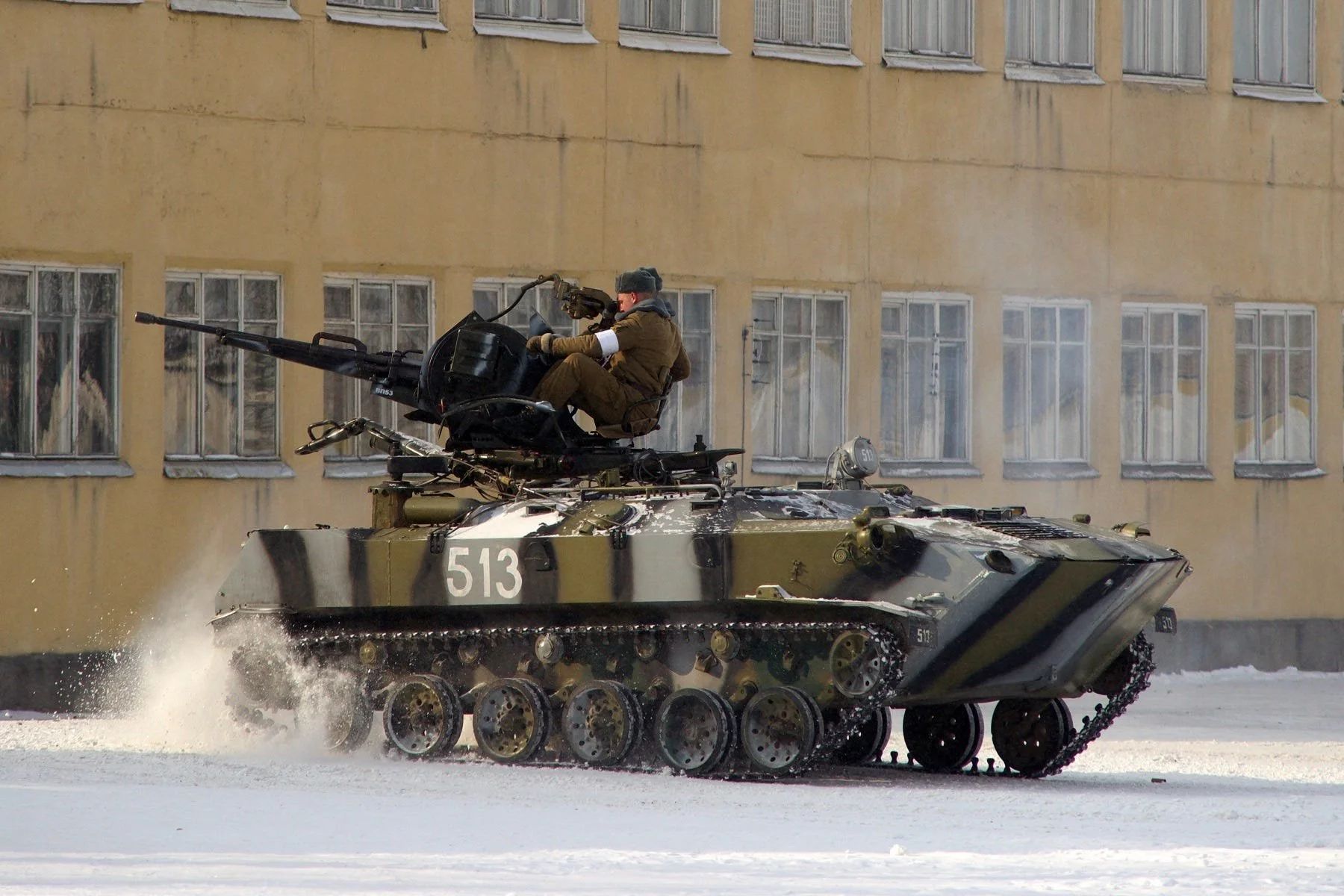
5. **Disruption of Russian Logistical Hubs and Ammunition Depots**
Ukrainian forces have consistently targeted Russian logistical hubs and ammunition depots across Crimea, recognizing their critical role in sustaining offensive operations in southern Ukraine. These strikes aim to sever vital supply lines and degrade Russia’s ability to resupply its forces, leading to significant disruptions and material losses. The Dzhankoi district, a crucial rail and road hub for Russian supply networks, has been a frequent target. In August 2022, a series of alleged sabotage acts occurred at an ammunition depot near Majskoye and an electricity substation in Dzhankoi itself, reportedly injuring two people and prompting the evacuation of around 2,000 residents from a 5 km radius.
Further demonstrating Ukraine’s focus on logistics, in March 2023, the Ministry of Defense reported the destruction of Russian ‘Kalibr-KN’ cruise missiles being transported by train in Dzhankoi. This strike not only eliminated valuable military hardware but also severely damaged the regional railway system, further impeding Russian movements. Additionally, on June 22, 2023, the Chonhar bridge, a vital road link connecting Crimea to the Ukrainian mainland, was damaged by a Ukrainian missile, temporarily disrupting a key supply route. Subsequent attacks included a fire and explosions at an ammunition depot near Staryi Krym on July 19, forcing evacuations and highway closures, and another strike by drones on an ammunition depot in Krasnohvardiiske Raion three days later, again necessitating a five-kilometer evacuation radius. These incidents underscore a deliberate campaign to systematically dismantle Russia’s logistical resilience within the occupied territory.
Military equipment: Russian invasion of Ukraine
Categories: 2020s conflicts, 2020s controversies, 2020s in Europe, 2020s in Russia, 2020s in Ukraine
Get more information about: Russian invasion of Ukraine
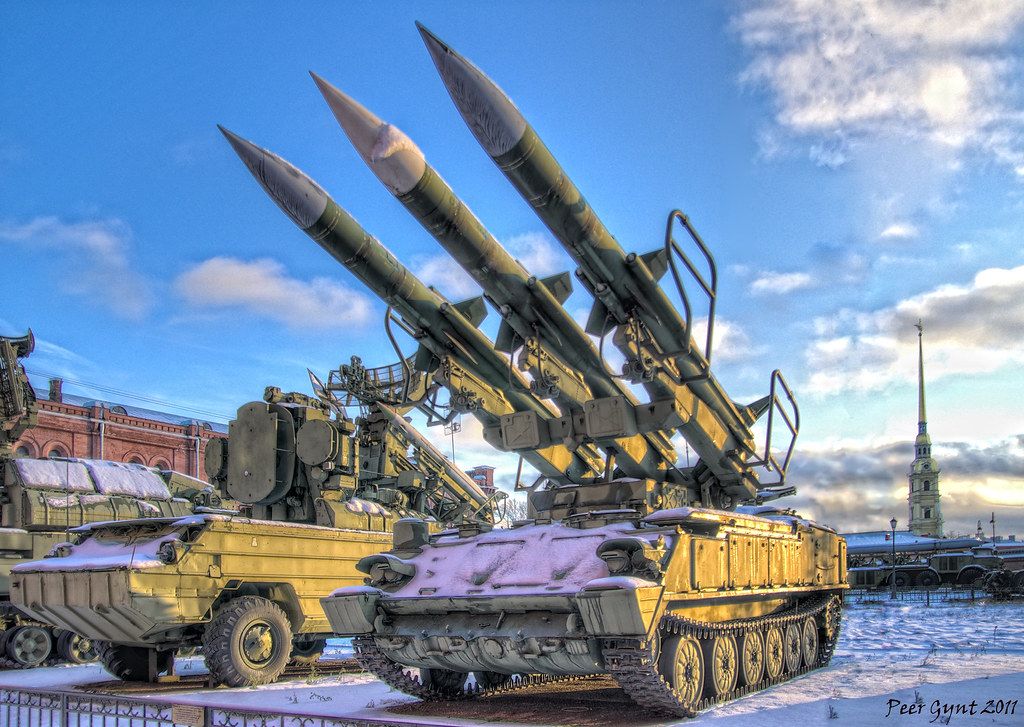
6. **Neutralization of Russian Air Defense Systems**
Ukrainian operations have increasingly focused on eliminating Russian air defense systems throughout Crimea, aiming to degrade Moscow’s protective umbrella and enable freer access for Ukrainian aerial and naval drones, as well as cruise missiles. This strategy is crucial for expanding Ukraine’s strike capabilities and reducing the effectiveness of Russian defenses over critical targets. A notable success occurred on August 23, 2023, when the Ukrainian military reported destroying a Russian S-400 missile system on Cape Tarkhankut, Crimea, using a modified R-360 Neptune missile. This strike was reported to have resulted in casualties among Russian military personnel.
The systematic targeting continued into October 2023, with Ukraine claiming the destruction of Russian air defense systems in a missile attack on Crimea, which Russian milbloggers indicated involved two missiles near Olenivka. This attack was believed to have specifically targeted an S-300 missile battery and reportedly injured approximately 17 Russian soldiers. Furthermore, in December 2023, Ukrainian media reported that a Nebo-M radar system near Baherove was damaged during drone attacks over Crimea. In May 2024, a strike near Vyshneve destroyed the launcher component of an S-400 air defense system, killing two Russian soldiers. These consistent attacks on air defense assets demonstrate Ukraine’s intent to create vulnerabilities in Russian airspace, paving the way for more successful long-range strikes and reducing Russian counter-capabilities.
Military equipment: Islamic Republic of Iran Air Defense Force
UnitName: Islamic Republic of Iran Air Defense Force
NativeName: نیروی پدافند هوایی ارتش جمهوری اسلامی ایران
Caption: The seal of the Islamic Republic of Iran Air Defense Force
Motto: [object Object]
StartDate: 1933–1954 1954–2008 2008–present
GarrisonLabel: Headquarters
Anniversaries: September 1st
March: April 18th
Size: 15,000
Commander1: Alireza Sabahifard
Commander1Label: Commander
IdentificationSymbol: File: IRI Air Defence Flag.svg
IdentificationSymbolLabel: Official flag
Categories: Air defence forces, All articles with unsourced statements, Anti-Israeli sentiment in Iran, Articles containing Arabic-language text, Articles containing Persian-language text
Get more information about: Islamic Republic of Iran Air Defense Force

7. **Strikes on Russian Oil and Gas Infrastructure**
A critical component of Ukraine’s strategy to degrade Russia’s military and economic capacity in Crimea involves targeting its oil and gas infrastructure, which is vital for fuel supply and naval operations. These strikes aim to disrupt energy logistics and exert economic pressure on the occupying forces. On April 29, 2023, Ukrainian forces likely attacked an oil storage facility in Kozacha Bay, Sevastopol, resulting in a fire that, according to the occupation governor, spanned over 1,000 square meters. Footage confirmed a large fire at the facility, signaling a clear intent to impact Russian energy assets.
The campaign expanded to include naval targets used for oil transportation. On August 5, 2023, a Ukrainian exploding drone boat severely damaged the Russian tanker Sig in the Kerch Strait, striking its engine room. This incident highlighted the vulnerability of maritime oil transport routes near Crimea. Subsequently, on September 11, 2023, Ukrainian military intelligence reported that special forces had captured several oil and gas drilling platforms off the western Crimean coast, which had been occupied and fortified by Russia since 2015. Among the facilities retaken were the Boyko Towers and the ‘Tavryda’ and ‘Syvash’ mobile rigs, an operation that also involved a Ukrainian MANPAD striking a Russian Su-30 fighter jet. These actions directly impact Russia’s energy extraction and supply capabilities in the Black Sea.
Continued pressure on oil infrastructure was observed in December 2023, when Ukrainian media reported that an oil terminal in Feodosia was damaged during a series of drone attacks over Crimea. Another significant incident occurred on October 7 (presumably 2024, given the context’s mixed dates), when Ukraine launched a drone attack against a fuel depot in Feodosia, causing explosions and fire detected by NASA’s FIRMS imagery. These strikes collectively demonstrate Ukraine’s methodical targeting of the energy backbone that supports Russian military operations in the region, aiming to cripple their logistical and operational capacity by disrupting fuel supplies and seizing strategic energy assets.
Military equipment: Russian strikes against Ukrainian infrastructure (2022–present)
Title: Russian strikes against Ukrainian infrastructure
Partof: Russian invasion of Ukraine
Caption: Kharkiv TEC-5
Location: Ukraine (spillover into Moldova, Poland and Belarus)
Date: September 2022–present
Type: drone strike
Fatalities: UN
Injuries: UN
Weapons: 3M-54 Kalibr,Kh-55#101/102 (X-101/102),Kh-555
Perps: Russian Armed Forces
Categories: 2020s building bombings, All Wikipedia articles in need of updating, All articles lacking reliable references, All articles with unsourced statements, April 2023 in Ukraine
Get more information about: Russian strikes against Ukrainian infrastructure (2022–present)
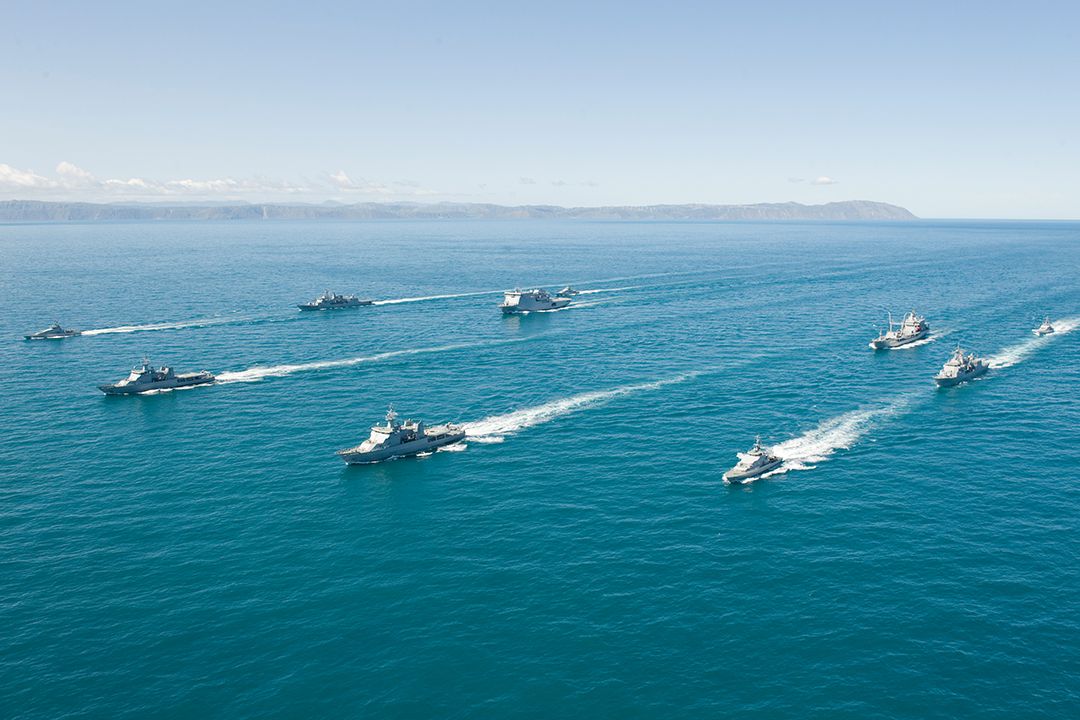
8. **Engagement of Additional Russian Naval Assets**
Beyond the concentrated attacks on the Sevastopol Naval Base, Ukrainian forces have actively engaged and sought to eliminate additional Russian naval assets across the Crimean Peninsula, including shipbuilding facilities and various classes of vessels. This broader campaign aims to diminish the overall strength and operational flexibility of Russia’s Black Sea Fleet. On November 4, 2023, Ukraine launched a missile strike on the Zalyv Shipbuilding yard in Kerch, Crimea, hitting a dry dock and reportedly damaging the Russian cruise missile carrier Askold. This strike underscored Ukraine’s ability to target naval construction and repair facilities, thereby impacting Russia’s long-term naval readiness.
Just six days later, on November 10, Ukrainian military intelligence reported that drone boats had successfully sunk a Russian Serna-class landing craft and an Ondatra-class craft in Vuzka Bay, Crimea. These smaller, yet tactically significant, vessels are crucial for amphibious operations and logistics, and their destruction further degrades Russia’s ability to conduct coastal missions. The pattern of attrition continued into 2024, with a Ukrainian sea drone sinking the Russian missile corvette Ivanovets in Donuzlav Bay on the west coast of Crimea on February 1. This marked another successful targeting of a combat vessel, demonstrating Ukraine’s evolving naval drone capabilities.
Perhaps one of the most significant losses for Russia in this category occurred on March 5, when the Russian patrol ship Sergey Kotov, along with an on-board helicopter, was sunk by Ukrainian naval drones near the Kerch Strait. The HUR (Defence Intelligence of Ukraine) stated that seven Russian crewmen were killed in this operation. The sinking of the Sergey Kotov, a relatively modern patrol vessel, highlighted the persistent threat posed by Ukrainian naval drones to the Black Sea Fleet, even to vessels actively patrolling and defending against such threats. These repeated engagements, targeting various types of naval assets and support infrastructure beyond the primary naval base, illustrate Ukraine’s sustained and diversified efforts to annihilate Russian naval power in the region, further isolating and degrading their capabilities in the Black Sea.
The ongoing series of operations in Crimea, ranging from the methodical targeting of logistical networks and air defense systems to the systematic degradation of oil and gas infrastructure and the consistent engagement of additional naval assets, signifies a profound shift in Ukraine’s military approach. These actions are not merely symbolic gestures but represent a deliberate and sustained campaign to undermine Russia’s occupation of the peninsula, eroding its military capabilities and logistical resilience piece by piece. As these calculated strikes continue to unfold, they serve as a potent demonstration of Ukraine’s evolving asymmetric warfare capabilities and its unwavering determination to reclaim all occupied territories, signaling an increasingly challenging environment for Russian forces in what was once considered their inviolable ‘sacred place.’ Ultimately, these efforts aim to achieve the annihilation of Russia’s operational capacity in Crimea, paving the way for its eventual liberation.



